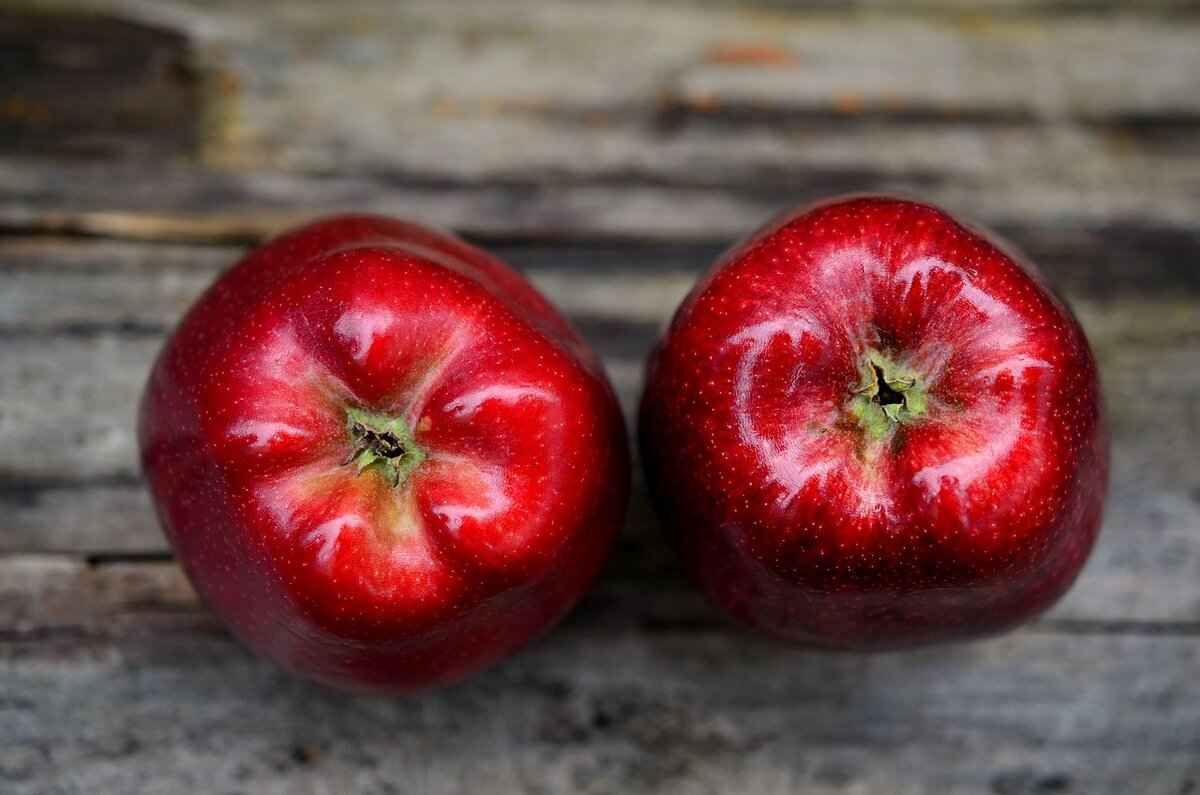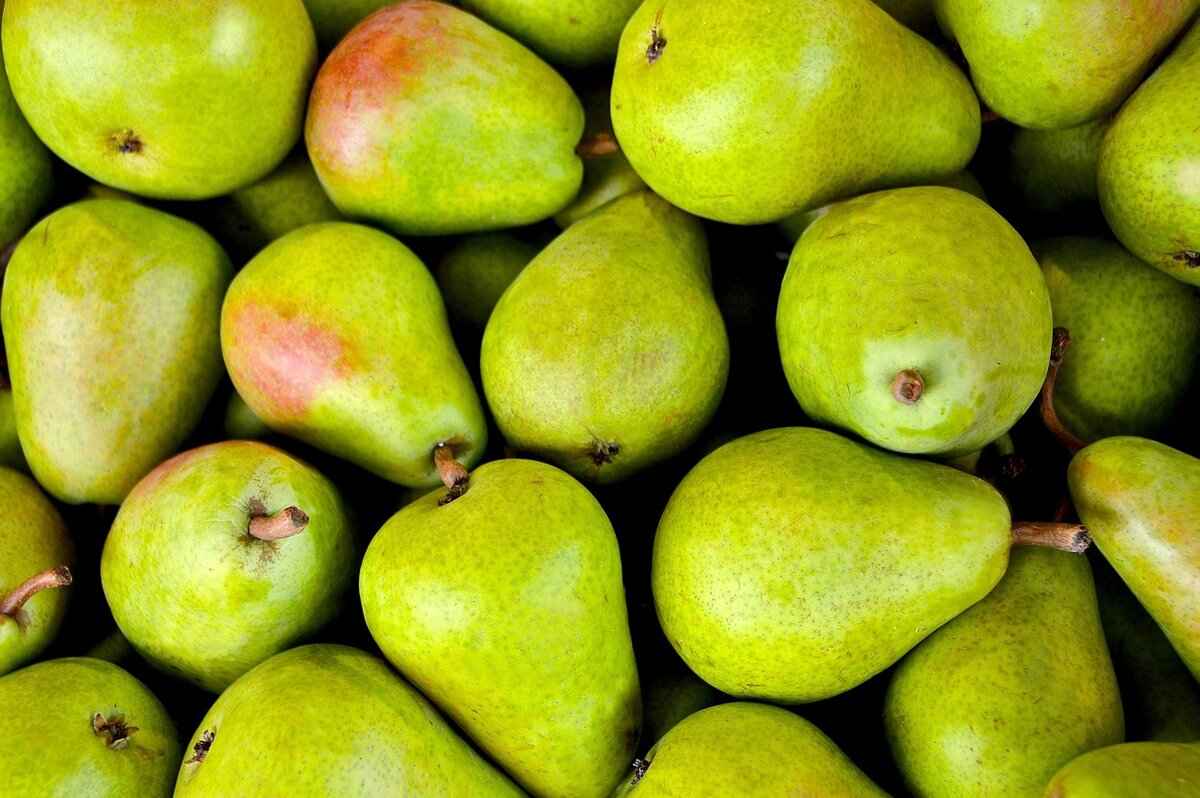This article delves into the captivating world of fermented ingredients, exploring their distinct flavors and the ways they enhance culinary experiences. We will uncover the science behind fermentation and its cultural significance across various cuisines.
Fermented ingredients are food products that have undergone a metabolic process involving microorganisms, such as bacteria, yeast, and molds. This transformative process not only alters the taste and texture but also enhances the nutritional profile, making fermented foods integral to many culinary traditions worldwide.
The process of fermentation can significantly enhance the flavor profile of foods. It introduces complex taste elements, resulting in a rich balance of sweet, sour, salty, and umami flavors that elevate dishes to new culinary heights. This depth of flavor is why fermented ingredients are cherished in global cuisines.
Fermentation involves various microorganisms, each contributing unique flavors and characteristics:
- Bacteria: Lactic acid bacteria are crucial for dairy and vegetable fermentation.
- Yeast: Yeast like Saccharomyces cerevisiae is essential in brewing and baking.
- Molds: Molds such as Aspergillus oryzae play a key role in soy and cheese fermentation.
Many fermented ingredients are staples in various cuisines, each bringing unique flavors and health benefits:
- Kimchi: A cornerstone of Korean cuisine, kimchi is made from fermented vegetables, primarily napa cabbage and radishes, known for its spicy and tangy flavor.
- Fermented Dairy Products: Products like yogurt and kefir are celebrated for their creamy textures and health benefits, particularly for gut health.
- Fermented Soy Products: Miso and soy sauce are essential in Asian cooking, providing depth and umami to dishes.
Incorporating fermented ingredients into your meals can enhance flavor and add nutritional benefits. Here are some practical tips:
- Experiment with Fermented Condiments: Adding ingredients like miso, soy sauce, or sriracha can elevate your dishes. Use them in marinades, dressings, or as finishing touches.
- Use Fermented Ingredients in Baking: Incorporate sourdough starter in baking to create breads with complex flavors and improved nutritional profiles.
- Pair with Fresh Ingredients: Combine fermented ingredients with fresh produce to balance flavors and textures in salads or side dishes.
Fermented foods offer numerous health benefits that can encourage their inclusion in diets:
- Probiotics and Gut Health: Fermented foods are rich in probiotics, beneficial bacteria that support gut health and improve digestion.
- Nutrient Absorption: Fermentation can enhance the bioavailability of nutrients, making it easier for the body to absorb essential vitamins and minerals.
In summary, the world of fermented ingredients is rich and varied, offering unique flavors and significant health benefits. By understanding their role in culinary traditions and exploring the myriad ways to incorporate them into your cooking, you can elevate your culinary experiences and enjoy the numerous advantages they provide.

What Are Fermented Ingredients?
Fermented ingredients are a cornerstone of culinary traditions across the globe, playing a pivotal role in enhancing flavors and preserving food. These ingredients undergo a metabolic process involving microorganisms such as bacteria, yeast, and molds. This fascinating transformation not only alters the taste and texture of the ingredients but also contributes to their nutritional profile, making them a valuable addition to various diets.
Fermented ingredients can be defined as foods that have undergone fermentation, a natural process where microorganisms break down sugars and starches into simpler compounds. This process results in the creation of unique flavors and textures that are integral to many culinary traditions worldwide. Fermentation has been practiced for thousands of years, serving both as a method of preservation and a means of enhancing the sensory qualities of food.
The fermentation process introduces a complex array of flavors, resulting in a harmonious blend of sweet, sour, salty, and umami elements. For example, the tanginess of yogurt and the umami richness of soy sauce are direct results of fermentation. These flavors can elevate dishes, transforming ordinary meals into extraordinary culinary experiences. Moreover, the depth of flavor achieved through fermentation can often be difficult to replicate through other cooking methods.
Various microorganisms are crucial in the fermentation process. These include:
- Bacteria: Lactic acid bacteria are essential in the fermentation of dairy products and vegetables, producing lactic acid that enhances flavor and acts as a preservative.
- Yeast: Particularly Saccharomyces cerevisiae, yeast plays a vital role in brewing and baking, converting sugars into alcohol and carbon dioxide, which contribute to the flavor of beer and bread.
- Molds: Molds such as Aspergillus oryzae are key in the fermentation of soy products and certain cheeses, breaking down starches and proteins to create distinctive flavors.
Fermented ingredients are diverse and vary by culture. Some of the most popular include:
- Kimchi: A staple in Korean cuisine, kimchi is made from fermented vegetables, primarily napa cabbage and radishes, known for its spicy and tangy flavor.
- Kefir: A fermented dairy product similar to yogurt, kefir is celebrated for its creamy texture and probiotic content, promoting gut health.
- Miso: A traditional Japanese seasoning produced by fermenting soybeans with salt and koji, miso adds depth and umami to soups and marinades.
Incorporating fermented ingredients into your meals can significantly enhance flavor and provide health benefits. Here are some practical tips:
- Use Fermented Condiments: Add miso, soy sauce, or sriracha to your dishes for an instant flavor boost. These condiments can be used in marinades, dressings, or as finishing touches.
- Experiment with Fermented Dairy: Include yogurt or kefir in smoothies, salad dressings, or as a base for sauces to add creaminess and tang.
- Incorporate Fermented Vegetables: Use kimchi or sauerkraut as toppings for sandwiches, tacos, or salads to introduce a crunchy, flavorful component.
Fermented foods are not only delicious but also offer numerous health benefits. They are rich in probiotics, which support gut health and improve digestion. Regular consumption of these foods can enhance the immune system and increase the bioavailability of nutrients, making it easier for the body to absorb vitamins and minerals.

How Does Fermentation Enhance Flavor?
Fermentation is a remarkable process that not only preserves food but also transforms its flavor profile in extraordinary ways. By harnessing the power of microorganisms, fermentation introduces a symphony of taste elements that can elevate even the simplest of dishes. This article delves into how fermentation enhances flavor, exploring the intricate balance of sweet, sour, salty, and umami notes that make fermented foods a favorite among culinary enthusiasts.
At its core, fermentation is a metabolic process that involves microorganisms such as bacteria, yeast, and molds. These tiny organisms work tirelessly to break down sugars and starches, creating a complex array of flavors and aromas. The beauty of fermentation lies in its ability to transform ordinary ingredients into extraordinary culinary experiences.
Fermentation enhances flavor through several mechanisms:
- Development of Acidic Notes: As bacteria ferment sugars, they produce organic acids like lactic acid, which impart a tangy flavor to foods. This acidity can brighten dishes and provide a refreshing contrast to rich or fatty ingredients.
- Creation of Umami: Fermented foods often contain glutamates, which are responsible for the savory umami flavor. Ingredients like soy sauce and miso are rich in these compounds, adding depth to various dishes.
- Enhanced Aromatics: Fermentation can also produce volatile compounds that enhance the aroma of foods. The scent of freshly baked sourdough bread or the pungent aroma of aged cheese is often a result of fermentation.
Many fermented foods are celebrated for their unique flavors. Here are some popular examples:
- Kimchi: This Korean staple is made from fermented vegetables and is known for its spicy, tangy flavor profile. The fermentation process not only enhances its taste but also provides numerous health benefits.
- Fermented Dairy: Products like yogurt and kefir offer creamy textures with a delightful tang. The fermentation of milk introduces beneficial bacteria while enriching the flavor.
- Pickles: Fermented cucumbers and other vegetables develop a distinctive sourness that complements a wide range of dishes, from sandwiches to salads.
Incorporating fermented ingredients into your meals can significantly enhance flavor and nutritional value. Here are some practical tips:
- Experiment with Fermented Condiments: Adding condiments like kimchi, miso, or fermented hot sauce can bring a burst of flavor to your dishes. Use them in dressings, marinades, or as toppings.
- Enhance Soups and Stews: A spoonful of fermented paste or a splash of vinegar can deepen the flavor of soups and stews, making them more complex and satisfying.
- Incorporate into Baking: Utilizing sourdough starter in baking not only improves the flavor of bread but also enhances its texture and nutritional profile.
In addition to their flavor-enhancing properties, fermented foods offer numerous health benefits:
- Rich in Probiotics: Fermented foods are a great source of probiotics, which promote gut health and improve digestion.
- Increased Nutrient Absorption: The fermentation process can enhance the bioavailability of vitamins and minerals, making it easier for your body to absorb essential nutrients.
In conclusion, fermentation is a powerful culinary technique that not only preserves food but also enhances its flavor profile. By understanding how fermentation works and incorporating fermented ingredients into your cooking, you can elevate your dishes to new heights, creating a more enjoyable and nutritious dining experience.
What Types of Microorganisms Are Involved?
Fermentation is a fascinating process that transforms simple ingredients into complex flavors and textures. At the heart of this transformation are various microorganisms that play a crucial role in developing the unique characteristics of fermented products. Understanding these microorganisms can enrich our appreciation of fermented foods and beverages.
Fermentation involves a diverse array of microorganisms, each contributing to the final product’s flavor and texture. The primary players include bacteria, yeast, and molds. Let’s explore how each of these microorganisms influences the fermentation process.
Yeast, especially the species Saccharomyces cerevisiae, is essential in many fermentation processes, including brewing beer and baking bread. This microorganism converts sugars into alcohol and carbon dioxide, creating not only the alcoholic content in beverages but also contributing to the flavor profile of baked goods. The fermentation process by yeast results in a range of flavors, from fruity esters to spicy phenols, depending on the fermentation conditions.
Bacterial fermentation is primarily driven by lactic acid bacteria, which are vital for products like yogurt, sauerkraut, and pickles. These bacteria ferment sugars into lactic acid, which not only preserves the food but also enhances its flavor. The tangy taste of yogurt and the crispness of pickled vegetables are direct results of bacterial activity. This process also introduces beneficial probiotics, promoting gut health and overall well-being.
Molds, particularly Aspergillus oryzae, are crucial in the fermentation of soy products, such as soy sauce and miso, as well as certain cheeses. Molds break down starches and proteins, resulting in distinctive flavors and textures. For example, the characteristic umami flavor in fermented soy products is largely due to the enzymatic activity of molds, which enhances the depth and richness of the final product.
The interplay between yeast, bacteria, and molds can create complex flavors and textures in fermented foods. For instance, in the production of traditional kimchi, lactic acid bacteria thrive alongside other microorganisms, leading to a harmonious blend of flavors that are both spicy and tangy. This collaborative fermentation process showcases the importance of each microorganism and how they contribute to the overall sensory experience.
Understanding the role of microorganisms in fermentation is crucial for both culinary enthusiasts and food scientists. Their ability to transform ingredients not only enhances flavor but also improves the nutritional profile of foods. Fermented products often have increased bioavailability of vitamins and minerals, making them more beneficial for health.
In summary, the diverse range of microorganisms involved in fermentation, including yeast, bacteria, and molds, plays a significant role in shaping the flavors and textures of various foods. By appreciating these microorganisms, we can better understand and enjoy the rich world of fermented ingredients.
Yeast Fermentation
is a fascinating process that plays a crucial role in the production of many beloved foods and beverages. At the heart of this process is Saccharomyces cerevisiae, a type of yeast that is essential in both brewing and baking. This microorganism is responsible for converting sugars into alcohol and carbon dioxide, which not only aids in the leavening of bread but also contributes to the rich flavors found in various types of beer.
Yeast is a single-celled fungus that thrives in sugary environments. When yeast is introduced to a substrate containing sugars, it undergoes fermentation. During this metabolic process, yeast consumes the sugars and produces alcohol and carbon dioxide as byproducts. This transformation is what gives fermented products their unique characteristics.
Saccharomyces cerevisiae is often referred to as “baker’s yeast” or “brewer’s yeast,” and it is renowned for its efficiency in fermentation. In baking, the carbon dioxide produced during fermentation causes the dough to rise, resulting in light and fluffy bread. In brewing, this same process produces alcohol, contributing to the flavor and aroma of the beer.
The fermentation process involving yeast not only produces alcohol and carbon dioxide but also generates a variety of flavor compounds. These compounds can include esters, phenols, and other aromatic substances that contribute to the overall taste and smell of the final product. For example, the fruity flavors often found in beers can be attributed to the specific strains of yeast used during fermentation.
- Brewer’s Yeast: Primarily used in the production of beer, it is known for its ability to produce a wide range of flavors.
- Baker’s Yeast: This yeast is commonly used in bread-making due to its rapid fermentation capabilities.
- Wine Yeast: Specialized strains are used in winemaking to enhance the flavor profiles of different wines.
- Wild Yeast: Found naturally in the environment, these yeasts can create unique flavors but are less predictable.
Incorporating yeast fermentation into your cooking can elevate your culinary creations. Here are some practical tips:
- Experiment with Sourdough: Start your own sourdough starter using wild yeast from your environment. This can lead to breads with complex flavors.
- Try Home Brewing: Consider brewing your own beer at home. This allows for exploration of different yeast strains and flavor profiles.
- Use Yeast in Fermented Foods: Explore making fermented foods like kimchi or pickles, where yeast plays a role in the overall fermentation process.
Yeast fermentation not only enhances flavor but also offers several health benefits:
- Probiotics: Many fermented foods contain beneficial bacteria that support gut health.
- Nutrient Availability: Fermentation can increase the bioavailability of nutrients, making it easier for the body to absorb vitamins and minerals.
- Digestive Health: Foods made with fermented yeast can aid in digestion and improve overall gut function.
In summary, yeast fermentation, particularly through the action of Saccharomyces cerevisiae, is a vital process that enriches our culinary experiences. From the lightness of freshly baked bread to the complex flavors of artisanal beers, understanding yeast’s role in fermentation opens up a world of flavor and health benefits. Embracing this ancient technique can lead to delightful discoveries in your kitchen.
Bacterial Fermentation
is a crucial process in the culinary world, significantly influencing the taste, texture, and preservation of various foods. This article delves into the role of lactic acid bacteria in fermentation, exploring their importance in dairy and vegetable products.
Lactic acid bacteria (LAB) are a group of microorganisms that play an essential role in the fermentation process. They are primarily responsible for converting sugars into lactic acid, which not only enhances flavor but also acts as a natural preservative. This process is vital in the production of fermented foods such as yogurt, cheese, sauerkraut, and pickles.
The production of lactic acid by LAB contributes to the distinctive tangy flavor associated with many fermented products. As these bacteria metabolize sugars, they create not just lactic acid, but also other flavor compounds that add complexity to the taste profile. This transformation can result in a delightful balance of sweet and sour flavors, making fermented foods not only tasty but also enjoyable to consume.
- Probiotics: LAB are known for their probiotic properties, promoting gut health and aiding digestion.
- Nutrient Absorption: The fermentation process increases the bioavailability of nutrients, making it easier for the body to absorb vitamins and minerals.
- Preservation: By producing lactic acid, these bacteria create an acidic environment that inhibits the growth of harmful bacteria, extending the shelf life of foods.
Several popular foods rely on LAB for their unique flavors and health benefits:
- Yogurt: Made from milk fermented with specific strains of LAB, yogurt is known for its creamy texture and tangy taste.
- Sauerkraut: Fermented cabbage that develops a sour flavor through the action of LAB, sauerkraut is a staple in many cuisines.
- Kefir: A fermented milk drink that is richer in probiotics than yogurt, kefir offers a tart flavor and numerous health benefits.
Incorporating fermented foods into your meals can enhance flavor and provide numerous health benefits. Here are some practical tips:
- Add Yogurt: Use yogurt as a base for smoothies, salad dressings, or as a topping for fruits and desserts.
- Include Sauerkraut: Add sauerkraut to sandwiches or as a side dish to enhance the flavor and nutritional value of meals.
- Experiment with Kefir: Use kefir in place of milk in baking or as a refreshing drink on its own.
As interest in health and wellness grows, the demand for fermented foods is rising. Research continues to explore the potential of LAB in developing new products and enhancing existing ones. Innovations in fermentation technology may lead to even more diverse flavors and health benefits, making bacterial fermentation an exciting field in both culinary and health contexts.
In conclusion, lactic acid bacteria are not just essential for the fermentation of dairy products and vegetables; they are also key players in enhancing flavor and providing health benefits. Embracing these fermented foods can lead to a richer culinary experience and improved well-being.
Mold Fermentation
Fermentation is a fascinating process that transforms ordinary ingredients into extraordinary culinary delights. One of the key players in this process is mold, particularly species like Aspergillus oryzae. This remarkable mold is essential in the fermentation of soy products and certain cheeses, playing a critical role in developing their unique flavors and textures.
Mold fermentation involves the use of specific molds to break down complex carbohydrates and proteins in food. This process not only enhances the flavor but also contributes to the texture and aroma of the final product. Molds such as Aspergillus oryzae are used in traditional fermentation practices, particularly in Asian cuisines, where they are integral to making products like soy sauce, miso, and tempeh.
The fermentation process begins when Aspergillus oryzae is introduced to cooked soybeans or grains. The mold then secretes enzymes that break down starches into simpler sugars and proteins into amino acids. This enzymatic action results in a rich umami flavor, which is a hallmark of fermented soy products. The breakdown of these compounds also leads to the formation of various aromatic compounds, contributing to the complexity of flavors.
Mold fermentation is not just about flavor; it also has significant cultural and nutritional implications. In many cultures, fermented foods are staples that provide essential nutrients. For instance, Aspergillus oryzae is used in the production of soy sauce, which is rich in amino acids and has been a fundamental part of Asian diets for centuries. This fermentation process also enhances the digestibility of these foods, making nutrients more accessible to the body.
- Enhanced Flavor: Mold fermentation brings out complex flavors that are often described as savory and rich.
- Nutritional Value: Fermented foods typically contain higher levels of vitamins and minerals, making them more nutritious.
- Probiotics: Some mold-fermented products may contain beneficial bacteria that support gut health.
Incorporating mold-fermented ingredients into your meals can elevate your cooking. Here are some practical tips:
- Use Soy Sauce: A splash of soy sauce can enhance the umami flavor in stir-fries, marinades, and dressings.
- Experiment with Miso: Miso paste adds depth to soups, sauces, and even salad dressings. Its rich flavor can transform a simple dish into something special.
- Try Tempeh: This fermented soybean product is a fantastic meat substitute, packed with protein and flavor. It can be grilled, sautéed, or added to salads.
Mold fermentation has deep cultural roots, especially in Asian countries. For example, the use of Aspergillus oryzae in Japan for making sake and soy sauce reflects a long-standing tradition of fermentation that has shaped the culinary landscape. These practices are not only about food but also about community and heritage, often passed down through generations.
In conclusion, mold fermentation, particularly through the action of Aspergillus oryzae, plays a vital role in creating some of the most beloved flavors in global cuisine. By understanding and incorporating these mold-fermented ingredients into our cooking, we can appreciate the rich tapestry of flavors and cultural significance they bring to our meals.

What Are Some Popular Fermented Ingredients?
Fermented ingredients play a crucial role in many culinary traditions, offering unique flavors and health benefits that enhance our meals. From tangy kimchi to creamy yogurt, these ingredients have become staples in kitchens around the world. In this article, we will explore some of the most popular fermented ingredients, their uses, and their significance in various cuisines.
- Kimchi: A quintessential Korean dish, kimchi is made from fermented vegetables, primarily napa cabbage and radishes. Its spicy and tangy flavor profile not only delights the palate but also provides numerous health benefits, including a rich source of probiotics.
- Yogurt: This popular dairy product is created through the fermentation of milk by specific bacterial cultures. Yogurt is celebrated for its creamy texture and tart flavor, making it a versatile ingredient in both sweet and savory dishes. Additionally, it is known to support gut health.
- Kefir: Similar to yogurt, kefir is a fermented dairy product that boasts a thinner consistency and a more pronounced tang. It is rich in probiotics and has been linked to improved digestion and enhanced immune function.
- Sauerkraut: This fermented cabbage dish is a staple in German cuisine. The fermentation process gives sauerkraut a distinctive sour flavor and contributes to its probiotic content, making it a healthy addition to meals.
- Miso: A traditional Japanese seasoning, miso is made from fermented soybeans and is known for its umami flavor. It is commonly used in soups, marinades, and dressings, adding depth and complexity to dishes.
- Tempeh: Originating from Indonesia, tempeh is a fermented soybean product that is often used as a meat substitute. It has a firm texture and a nutty flavor, making it a popular choice for vegetarian and vegan diets.
- Fermented Hot Sauce: Many cultures produce their own versions of fermented hot sauce, which adds a spicy kick to dishes. The fermentation process can enhance the flavor profile, making it more complex and layered.
- Pickles: Fermented pickles are made by soaking cucumbers in a brine solution. This simple process imparts a crunchy texture and a tart flavor, making them a delightful addition to sandwiches and salads.
Each of these fermented ingredients contributes unique flavors and textures that can elevate a dish. For instance, the spiciness of kimchi can enliven a simple rice bowl, while the creamy tang of yogurt can balance the heat of spicy curries. Additionally, the umami richness of miso can deepen the flavor of soups and stews, making them heartier and more satisfying.
Beyond flavor, fermented ingredients are also known for their health benefits. The probiotics found in many fermented foods can aid digestion, enhance immune function, and even improve mental health. By incorporating these ingredients into your meals, you not only enhance the taste but also contribute positively to your overall well-being.
Incorporating fermented ingredients into your diet can be both easy and rewarding. Start by adding a spoonful of kimchi to your tacos or using yogurt as a base for salad dressings. Consider using miso in your marinades or soups for an added depth of flavor. By experimenting with these ingredients, you can discover new culinary delights while reaping their health benefits.
In conclusion, the world of fermented ingredients is vast and varied, offering a plethora of flavors and health advantages. By embracing these ingredients, you can enhance your culinary creations and contribute to your overall health.
Kimchi and Its Cultural Significance
Kimchi is more than just a side dish; it is a cultural icon in Korea, representing the country’s culinary heritage and traditions. This beloved dish, primarily made from fermented napa cabbage and radishes, is celebrated for its distinctively spicy and tangy flavors. The fermentation process not only enhances its taste but also enriches it with probiotics, making kimchi a nutritious addition to any meal.
Kimchi is unique due to its variety of ingredients and the fermentation process it undergoes. While napa cabbage and radishes are the primary vegetables used, other ingredients such as garlic, ginger, chili pepper, and fish sauce can also be added to create different flavor profiles. This versatility allows for a wide range of kimchi types, each with its own distinct taste and texture.
The process of making kimchi involves several key steps:
- Preparation: Vegetables are washed and cut into pieces.
- Salting: Salt is used to draw out moisture from the vegetables, which helps in the fermentation process.
- Mixing: A spice paste made from ingredients like chili powder, garlic, and ginger is mixed with the vegetables.
- Fermentation: The mixture is packed into jars and left to ferment at room temperature for several days before being stored in the refrigerator.
Kimchi is not only delicious but also packed with health benefits. It is rich in probiotics, which are essential for maintaining a healthy gut microbiome. Regular consumption of kimchi can improve digestion, boost the immune system, and even enhance nutrient absorption. Additionally, kimchi is low in calories and high in vitamins A, B, and C, making it a nutritious addition to various diets.
Kimchi holds a significant place in Korean culture, often served at every meal as a side dish. It symbolizes the importance of fermentation in Korean cuisine and is a staple during major holidays and family gatherings. The act of making kimchi, known as kimjang, is a communal activity that brings families and communities together, emphasizing the value of sharing and preserving culinary traditions.
Kimchi can be enjoyed in numerous ways:
- As a Side Dish: Serve it alongside rice and main dishes to enhance flavor.
- In Soups: Add kimchi to stews or soups for a spicy kick.
- In Tacos: Use kimchi as a topping for tacos or fusion dishes.
- In Fried Rice: Incorporate kimchi into fried rice for added depth and flavor.
In conclusion, kimchi is a remarkable example of how fermentation can transform simple ingredients into a flavorful and healthful dish. Its rich cultural significance and numerous health benefits make it a valuable addition to any diet. Whether enjoyed on its own or as part of a larger meal, kimchi continues to be a cherished staple in Korean cuisine and beyond.
Fermented Dairy Products
Fermented dairy products are an integral part of many culinary traditions around the world. They are not only celebrated for their creamy textures and tangy flavors, but also for their impressive array of health benefits. Among these, the promotion of gut health stands out as a key advantage, making products like yogurt and kefir increasingly popular in modern diets.
Fermented dairy products are created through the process of fermentation, where bacteria and yeasts convert lactose and other sugars into lactic acid and other compounds. This process not only preserves the dairy but also enhances its flavor and nutritional profile. Common examples include:
- Yogurt: A thick, creamy product made by fermenting milk with specific bacterial cultures.
- Kefir: A fermented milk drink that is slightly effervescent and contains a diverse range of probiotic microorganisms.
- Cottage Cheese: A fresh cheese curd product that is often enjoyed for its mild flavor and high protein content.
One of the most significant health benefits of fermented dairy products is their ability to support gut health. The live bacteria present in these foods, known as probiotics, can help maintain a balanced gut microbiome. This balance is crucial for:
- Improving Digestion: Probiotics assist in breaking down food, making nutrients more accessible to the body.
- Enhancing Immune Function: A healthy gut microbiome can lead to a stronger immune response, helping to fend off illnesses.
- Reducing Symptoms of Digestive Disorders: Conditions like irritable bowel syndrome (IBS) may benefit from the regular consumption of fermented dairy products.
Aside from gut health, fermented dairy products provide a range of nutritional benefits. These include:
- Increased Nutrient Absorption: The fermentation process can enhance the bioavailability of vitamins and minerals, allowing the body to absorb them more efficiently.
- Rich Source of Protein: Fermented dairy products are often high in protein, which is essential for muscle repair and overall health.
- Calcium and Vitamin D: Many fermented dairy products are fortified with calcium and vitamin D, which are vital for bone health.
Incorporating fermented dairy products into your daily meals can be both enjoyable and beneficial. Here are some practical tips:
- Breakfast Options: Add yogurt to smoothies or enjoy it with fresh fruits and nuts for a nutritious breakfast.
- Cooking and Baking: Use kefir as a substitute for milk or buttermilk in recipes for pancakes, muffins, or dressings.
- Snacking: Pair cottage cheese with herbs and spices for a savory snack or spread it on whole-grain toast.
While fermented dairy products offer numerous health benefits, it is essential to consider individual tolerances. Some people may be lactose intolerant and experience discomfort when consuming dairy. In such cases, opting for lactose-free options or non-dairy fermented products, like coconut yogurt, can be beneficial.
In summary, fermented dairy products like yogurt and kefir are not only delicious but also packed with health benefits, particularly for gut health. By understanding their nutritional advantages and incorporating them into your diet, you can enjoy their unique flavors while enhancing your overall well-being.

How Can You Incorporate Fermented Ingredients into Your Cooking?
Incorporating fermented ingredients into your cooking can transform ordinary meals into extraordinary culinary experiences. These ingredients not only enhance the flavor of dishes but also offer numerous health benefits, making them a valuable addition to any kitchen. Below are some practical and creative ways to effectively use fermented ingredients in your cooking.
Fermented ingredients are rich in probiotics, which are beneficial for gut health. They also introduce complex flavors that can elevate your meals. By understanding how to incorporate these ingredients, you can enjoy enhanced taste while reaping the nutritional rewards.
- Start with Fermented Condiments: Adding fermented condiments like kimchi, sriracha, or miso can instantly elevate the flavor of your dishes. Try using miso in dressings or marinades to add depth.
- Enhance Your Soups and Stews: Incorporate fermented ingredients such as sauerkraut or fermented beans into soups and stews. They not only add a unique tanginess but also boost the nutritional profile.
- Experiment with Fermented Dairy: Use yogurt or kefir as a base for sauces, smoothies, or salad dressings. Their creamy texture and tangy flavor can enhance many dishes.
- Incorporate Fermented Grains: Try using sourdough bread or fermented rice in your meals. Sourdough can be used for sandwiches or as a side, while fermented rice can be a base for various dishes.
- Use in Baking: Fermented ingredients like sourdough starter can be used in baking to create bread with complex flavors. They also improve the nutritional profile, making it easier to digest.
- Fermented Vegetable Toppings: Top your salads or tacos with fermented vegetables like pickles or kimchi for an added crunch and flavor burst.
- Marinades and Dressings: Create marinades using fermented ingredients such as soy sauce or vinegar. They can add a savory depth to meats and vegetables.
- Flavor Boosters in Dips: Incorporate fermented ingredients into dips. For example, adding yogurt to your hummus can create a creamier texture and unique flavor.
- Fermented Smoothies: Blend kefir or yogurt into your smoothies for a creamy base that also boosts probiotics.
Beyond their unique flavors, fermented foods offer a range of health benefits. They are known to improve digestion and support a healthy gut microbiome. Regular consumption can enhance the immune system and increase the bioavailability of nutrients, making it easier for the body to absorb vitamins and minerals.
By incorporating fermented ingredients into your cooking, you not only enhance the flavor of your meals but also contribute positively to your health. With endless possibilities for use, these ingredients can be tailored to fit any culinary style, making them a versatile addition to your kitchen.
Experiment with Fermented Condiments
Fermented condiments have become essential in modern kitchens, offering unique flavors and health benefits that can transform ordinary dishes into extraordinary culinary experiences. By incorporating these ingredients, you not only enhance the taste of your meals but also introduce beneficial probiotics into your diet. This section will delve into how to effectively experiment with fermented condiments like miso, soy sauce, and sriracha, elevating your cooking to new heights.
Fermented condiments are created through the natural fermentation process, which involves microorganisms breaking down sugars and starches. This process not only develops complex flavors but also enhances the nutritional profile of the ingredients. For instance, miso is rich in amino acids, while soy sauce contains antioxidants. The fermentation process also allows these condiments to have a longer shelf life compared to their non-fermented counterparts.
Miso is a versatile fermented soybean paste that can add depth and umami to a variety of dishes. Consider the following ways to incorporate miso:
- Soups and Broths: Add a spoonful of miso to your soups or broths for a rich, savory flavor.
- Marinades: Combine miso with ginger, garlic, and a splash of vinegar to create a flavorful marinade for meats or tofu.
- Dressings: Whisk miso into vinaigrettes to create a creamy, tangy dressing for salads.
Soy sauce is a staple in many cuisines, particularly in Asian cooking. Its salty and savory profile can enhance a variety of dishes:
- Stir-Fries: Use soy sauce as a base for your stir-fry sauces, pairing it with garlic and sesame oil for added flavor.
- Marinades: Combine soy sauce with honey and rice vinegar for a delicious marinade that caramelizes beautifully when grilled.
- Dipping Sauce: Create a simple dipping sauce by mixing soy sauce with chopped scallions and sesame seeds.
Sriracha is a popular hot sauce that adds heat and flavor to dishes. Here are some creative ways to use it:
- Condiment: Drizzle sriracha over eggs, tacos, or pizza for an extra kick.
- Marinades: Mix sriracha with lime juice and honey to create a spicy marinade for grilled chicken or shrimp.
- Soups: Stir sriracha into soups or noodle dishes to enhance the overall flavor profile.
Don’t hesitate to mix and match these fermented condiments. For example, combining miso and soy sauce can create a rich, savory glaze for roasted vegetables. Experimenting with different ratios can yield exciting new flavors that surprise and delight your palate.
In addition to their flavor-enhancing properties, fermented condiments offer numerous health benefits. They are rich in probiotics, which support gut health and digestion. Incorporating these condiments into your meals can also help improve nutrient absorption, making your diet more effective.
In conclusion, experimenting with fermented condiments like miso, soy sauce, and sriracha can open up a world of flavor possibilities in your cooking. By understanding how to use these ingredients effectively, you can elevate your dishes while also enjoying the numerous health benefits they provide. So, roll up your sleeves and start exploring the delicious world of fermented flavors!
Use Fermented Ingredients in Baking
Incorporating fermented ingredients into baking can transform your culinary creations, leading to breads that are not only delicious but also packed with nutritional benefits. Fermentation is a natural process that enhances the flavor, texture, and health profile of baked goods. This article delves into the various ways fermented ingredients, particularly sourdough starter, can elevate your baking game.
A sourdough starter is a mixture of flour and water that has been fermented by wild yeast and lactic acid bacteria. This living culture is the backbone of sourdough bread, contributing to its unique flavor and texture. Unlike commercial yeast, sourdough starter takes longer to rise, allowing for a more complex development of flavors.
- Enhanced Flavor: Fermented ingredients impart a depth of flavor that is hard to achieve with commercial yeast. The sour notes from the lactic acid bacteria create a balance that makes sourdough bread particularly appealing.
- Improved Texture: The fermentation process helps develop gluten, resulting in a chewy, airy crumb. This texture is highly sought after in artisan breads.
- Nutritional Benefits: Fermentation increases the bioavailability of nutrients, making it easier for the body to absorb vitamins and minerals. It also breaks down gluten, potentially making it easier to digest for some individuals.
Using sourdough starter in your baking is straightforward, but it does require some planning. Here are a few tips:
- Feed Your Starter: Regularly feeding your starter with equal parts flour and water keeps it active. A healthy starter is essential for successful baking.
- Adjusting Recipes: When substituting sourdough starter for commercial yeast, you may need to adjust the amount of flour and water in your recipe. A general rule is to replace a portion of the flour and water with the same amount of starter.
- Experiment with Timing: Sourdough requires longer fermentation times. Be patient and allow your dough to rise slowly for the best flavor and texture.
Aside from sourdough starter, there are other fermented ingredients that can enhance your baking:
- Yogurt: Incorporating yogurt into your dough can add moisture and tanginess, resulting in a tender crumb.
- Kefir: Similar to yogurt, kefir can be used in place of milk or water to add a unique flavor profile.
- Miso: This fermented soybean paste can add umami depth to savory baked goods, such as breads and muffins.
The fermentation process involves a variety of microorganisms, primarily yeast and lactic acid bacteria. Yeast ferments sugars into carbon dioxide and alcohol, causing the dough to rise. Meanwhile, lactic acid bacteria contribute to the sour flavor and enhance the nutritional profile of the bread. This symbiotic relationship between yeast and bacteria is what makes sourdough unique.
To achieve the best results when using fermented ingredients, consider these practical tips:
- Maintain a Consistent Environment: Temperature and humidity can affect fermentation. Keep your dough in a warm, draft-free area for optimal rising.
- Be Observant: Pay attention to the texture and smell of your dough. These sensory cues can guide you in determining when your dough is ready for baking.
- Practice Patience: Fermented baking takes time. Allow your dough to ferment fully to develop the best flavor and texture.
In summary, using fermented ingredients like sourdough starter in baking not only enhances flavors and textures but also offers numerous health benefits. As you experiment with these ingredients, you’ll discover a world of culinary possibilities that can elevate your baking to new heights.

What Are the Health Benefits of Fermented Foods?
Fermented foods have gained popularity in recent years, not only for their unique flavors but also for their impressive health benefits. Understanding these advantages can motivate individuals to incorporate more of these nutrient-rich foods into their diets. Let’s delve into the various health benefits of fermented foods and explore how they can contribute to overall well-being.
Fermented foods are created through the process of fermentation, where microorganisms such as bacteria, yeast, and molds break down sugars and starches. This not only enhances flavor but also unlocks numerous health benefits. Here are some key advantages:
- Boosting Gut Health: Fermented foods are a rich source of probiotics, which are beneficial bacteria that promote a healthy gut microbiome. Regular consumption can help balance gut flora, leading to improved digestion and reduced symptoms of gastrointestinal disorders.
- Enhancing Nutrient Absorption: The fermentation process can increase the bioavailability of essential nutrients. For example, fermented dairy products like yogurt can help the body absorb calcium and magnesium more effectively, contributing to stronger bones.
- Supporting the Immune System: A healthy gut is closely linked to a strong immune system. Probiotics found in fermented foods can enhance immune response, helping the body fend off illnesses and infections.
- Potential Mental Health Benefits: Emerging research suggests a connection between gut health and mental well-being. The gut-brain axis indicates that probiotics may play a role in alleviating symptoms of anxiety and depression.
- Reducing Inflammation: Fermented foods may also help reduce inflammation in the body. Chronic inflammation is linked to various health issues, including heart disease and diabetes. Incorporating these foods into your diet can potentially mitigate such risks.
- Improving Skin Health: Certain fermented foods, like kefir and sauerkraut, are believed to have skin benefits due to their probiotic content. A healthy gut can lead to clearer skin and may help manage conditions like acne and eczema.
There is a wide variety of fermented foods to choose from, each offering unique flavors and health benefits. Here are some popular options:
- Yogurt: A staple in many diets, yogurt is packed with probiotics and can be enjoyed on its own or as part of smoothies and desserts.
- Kefir: This fermented milk drink is rich in probiotics and can be consumed as a beverage or used in salad dressings.
- Kimchi: A traditional Korean dish made from fermented vegetables, kimchi is spicy and tangy, making it a flavorful addition to various meals.
- Sauerkraut: Fermented cabbage that is not only delicious but also provides a good source of fiber and vitamins.
- Miso: This Japanese seasoning made from fermented soybeans adds a savory depth to soups and marinades.
Adding fermented foods to your meals can be simple and enjoyable. Here are some practical tips:
- Start with Breakfast: Add yogurt or kefir to your breakfast routine. You can mix it with fruits, nuts, or granola for a nutritious start to your day.
- Use Fermented Condiments: Incorporate miso or kimchi into your cooking. These can enhance the flavor of soups, stir-fries, and salads.
- Experiment with Snacks: Choose fermented snacks like pickles or sauerkraut to add a healthy crunch to your meals.
- Try DIY Fermentation: Consider making your own fermented foods at home, such as sauerkraut or kombucha, to explore different flavors and health benefits.
By understanding and embracing the health benefits of fermented foods, you can enrich your diet while enjoying delicious flavors. These foods not only support your gut health but also contribute to your overall well-being.
Probiotics and Gut Health
Probiotics are often hailed as the superheroes of gut health. These live microorganisms, primarily bacteria, play a crucial role in maintaining a balanced gut microbiome. The consumption of fermented foods, which are rich in probiotics, has gained significant attention in recent years due to their numerous health benefits. But what exactly are probiotics, and how do they influence our digestive health?
Probiotics are defined as live microorganisms that, when consumed in adequate amounts, confer a health benefit on the host. They are predominantly found in fermented foods such as yogurt, kefir, sauerkraut, kimchi, and kombucha. These beneficial bacteria help to restore the natural balance of gut flora, which can be disrupted by factors such as poor diet, stress, and antibiotic use.
Regular consumption of probiotics can lead to significant improvements in gut health:
- Improved Digestion: Probiotics aid in the breakdown of food, making it easier for the body to absorb nutrients. They help in the fermentation of dietary fibers, producing short-chain fatty acids that are beneficial for gut health.
- Reduction of Digestive Disorders: Probiotics have been shown to alleviate symptoms of digestive disorders such as irritable bowel syndrome (IBS), constipation, and diarrhea. They can help restore normal bowel function and reduce inflammation in the gut.
- Enhanced Immune Function: A significant portion of the immune system is located in the gut. Probiotics can strengthen the gut barrier, preventing harmful pathogens from entering the bloodstream and thus enhancing overall immune response.
There are several strains of probiotics, each with unique benefits:
- Lactobacillus: This strain is commonly found in yogurt and fermented foods. It is known for its ability to ferment lactose, making it beneficial for individuals who are lactose intolerant.
- Bifidobacterium: Found in various dairy products, this strain helps in the digestion of dietary fibers and is associated with improved gut health and immune function.
- Saccharomyces boulardii: A beneficial yeast, it is effective in preventing and treating diarrhea and is often used in conjunction with antibiotics.
Incorporating probiotics into your daily diet can be simple and enjoyable. Here are some practical tips:
- Start Your Day with Yogurt: Choose plain, unsweetened yogurt with live cultures. Add fruits and nuts for a nutritious breakfast.
- Try Fermented Vegetables: Include kimchi or sauerkraut as a side dish to your meals. They add flavor and crunch while boosting your probiotic intake.
- Drink Kombucha: This fermented tea is a refreshing beverage option that contains a variety of probiotics. Just be mindful of sugar content.
While probiotics are generally safe for most people, some individuals may experience mild side effects such as bloating or gas when first incorporating them into their diets. It is advisable for those with compromised immune systems or underlying health conditions to consult a healthcare professional before starting probiotic supplements.
In summary, the integration of fermented foods rich in probiotics into your diet can significantly enhance gut health, improve digestion, and bolster immune function. By understanding the benefits and types of probiotics, you can make informed choices to support your overall well-being.
Nutrient Absorption
Fermentation is a remarkable process that not only transforms the flavors of foods but also plays a critical role in enhancing their nutritional value. One of the most significant benefits of fermentation is its ability to increase the bioavailability of essential nutrients, making it easier for our bodies to absorb vital vitamins and minerals. This article delves into how fermentation improves nutrient absorption and its overall impact on health.
During fermentation, microorganisms such as bacteria, yeast, and molds break down complex compounds in foods. This metabolic process leads to the release of nutrients that might otherwise be difficult for the body to absorb. For instance, fermentation can reduce the levels of anti-nutrients like phytic acid, which can inhibit the absorption of minerals such as iron, zinc, and calcium. By breaking down these compounds, fermented foods allow for greater nutrient availability.
- Kefir: This fermented dairy product is rich in probiotics and enhances calcium absorption, crucial for bone health.
- Kimchi: Besides its rich probiotic content, kimchi is packed with vitamins A, B, and C, which become more accessible through fermentation.
- Miso: A traditional Japanese paste made from fermented soybeans, miso is high in protein and helps improve the absorption of nutrients from other foods.
- Sauerkraut: Fermented cabbage that not only provides vitamin C but also enhances iron absorption due to the fermentation process.
Fermentation significantly impacts several key nutrients:
- Vitamins: Certain fermented foods can increase the levels of B vitamins, including B12, which is crucial for energy metabolism and neurological function.
- Minerals: The breakdown of anti-nutrients allows for better absorption of minerals like magnesium, calcium, and iron.
- Amino Acids: Fermentation can enhance the availability of amino acids, the building blocks of proteins, making them easier for the body to utilize.
Incorporating fermented foods into your diet can lead to numerous health benefits, primarily due to their enhanced nutrient absorption capabilities:
- Gut Health: The probiotics found in fermented foods support a healthy gut microbiome, which is essential for digestion and overall health.
- Immune System Support: A healthy gut contributes to a robust immune system, helping the body fend off illnesses.
- Improved Digestion: Fermented foods can alleviate digestive issues, making it easier for the body to process and absorb nutrients.
Adding fermented foods to your meals can be simple and rewarding:
- Start with Small Portions: Introduce fermented foods gradually to allow your digestive system to adjust.
- Mix with Meals: Add kimchi to rice dishes, yogurt to smoothies, or miso to soups to enhance flavor and nutrition.
- Experiment with Recipes: Try making your own fermented foods at home, such as pickles or sauerkraut, to control ingredients and flavors.
In conclusion, the process of fermentation not only enhances the flavor of foods but also significantly boosts their nutritional profile. By increasing the bioavailability of vitamins and minerals, fermented foods can play a vital role in improving overall health. Embracing these ingredients in your diet is a delicious way to ensure you are getting the most out of your meals.
Frequently Asked Questions
- What are the benefits of consuming fermented foods?
Fermented foods are packed with probiotics that enhance gut health, improve digestion, and boost the immune system. They also increase nutrient absorption, making vitamins and minerals more accessible to your body.
- How can I incorporate fermented ingredients into my meals?
You can easily add fermented ingredients like kimchi, yogurt, or miso to your dishes. Try using them in marinades, dressings, or as toppings to elevate the flavor of your meals!
- Are all fermented foods healthy?
While many fermented foods are nutritious, it’s important to check for added sugars or preservatives. Opt for products with minimal ingredients to maximize health benefits.
- Can I make fermented foods at home?
Absolutely! Many fermented foods like yogurt, sauerkraut, and kimchi can be made at home with simple ingredients and a bit of patience. It’s a fun way to experiment with flavors!
- What types of microorganisms are involved in fermentation?
Fermentation involves various microorganisms, including bacteria, yeast, and molds. Each type contributes unique flavors and textures to the final product, enhancing your culinary experience.














